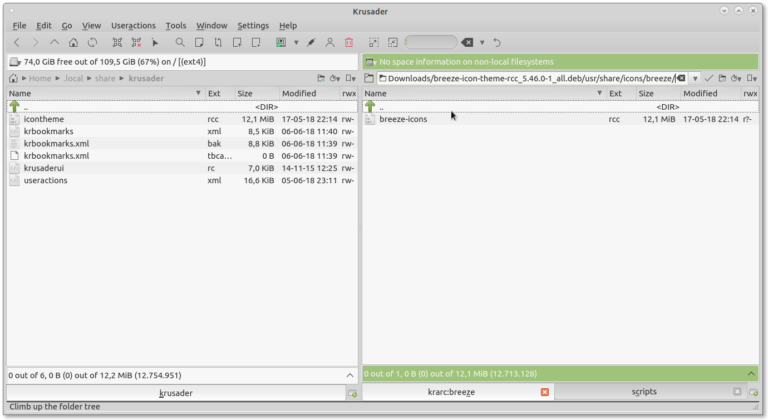

If you want to use the PNG icon that I’m using, you can get it here.
Krusader unraid setup download#
So, download the Home Assistant image from the Internet. To do that, you will need to upload the Home Assistant PNG icon to the Unraid server and save it in the same folder you added the Home Assistant qcow2 image. Set up the Home Assistant icon on the VMīefore starting the virtual machine, you want to change the default Linux icon to the Home Assistant logo. Uncheck the option Start VM after creation, and click on Create. If you have USB devices connected to your server that you need to link to the Home assistant VM, for example, a Zigbee or Zwave dongle, you can select them under USB Devices. The template also generates a MAC address for the virtual machine, which you can use in your router to assign a static IP address to Home Assistant.

Then, click on the field next to it and select: user > domains > home_assistant > and select the Home Assistant qcow2 image. Then, we need to link the Home Assistant image file to the VM, so under Primary vDisk Location, change it from Auto to Manual. The BIOS, make sure that it’s set to OVMF. The Initial Memory set it to 2048 MB, which is 2 Gigs. You also want to set the Autostart to Yes, so the virtual machine starts automatically anytime the Unraid server is rebooted. Set the name for the VM to Home Assistant. To add a new virtual machine, go to the VMs tab, click on Add VM and select the Linux template. I personally have been running my setup with the minimum resources required, and I haven’t seen the need to change it. To start, you can definitely set it up to the minimum and later on allocate more resources to the VM if needed. The minimum resources required to run Home Assistant are: Now that the image is uploaded to the Unraid server, you can go ahead and set up the virtual machine that will run Home Assistant. After you have the new user created, go back to the domains settings and under SMB User Access, make sure that the new user has read and write access. Then, click on Apply, go to the Users tab and add a new user. You also want that only specific users can manage this folder so, set the Security to Secure. Under SMB Security Settings, set the Export to Yes. So, open the Unraid web interface, go to the Shares tab and click on domains. The folder needs to be accessible from a computer in your network. Unzip the image, and you then need to upload the file to the Unraid server and save it in the domains folder. The first thing you need to do is download the Home Assistant image, so go to the Home Assistant website and download the KVM image. Upload the Home Assistant image to Unraid
Krusader unraid setup update#
The OS version does come with the Supervisor, allowing to easily update Home Assistant and installing add-ons.
Krusader unraid setup install#
So, instead of the Core version, we’ll install the Home Assistant OS on a virtual machine. So, setting up different integrations and also update Home Assistant will require more steps. The Core version doesn’t come with the Supervisor. You can install the Home Assistant Core version on a Docker container or set up the Home Assistant OS on a virtual machine. So, to install Home Assistant on Unraid, you can set it up in 2 ways.


 0 kommentar(er)
0 kommentar(er)
